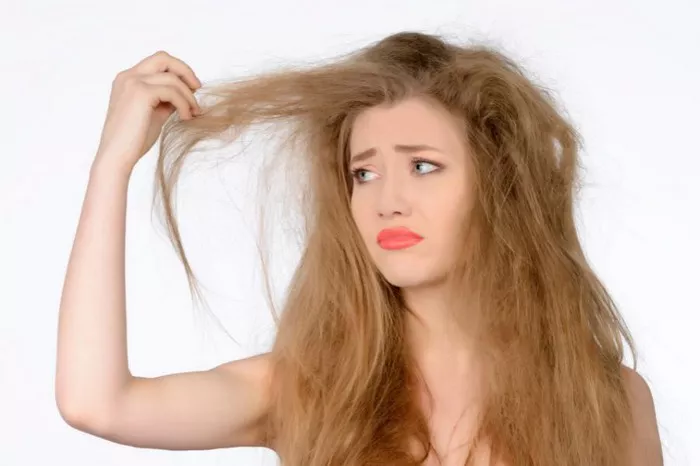Healthy hair is a symbol of beauty and confidence. But with so many products and treatments available, finding the right solution can feel overwhelming. The truth is, there’s no single “best” treatment for everyone. Your hair type, texture, and specific concerns (like dryness or breakage) determine what will work for you. In this guide, we’ll break down the science of hair, common problems, and the most effective treatments to help you achieve strong, shiny, and vibrant hair.
Understanding Hair Structure
To pick the right treatment, you need to know how hair works.
The Hair Shaft: This is the visible part of your hair. It has three layers:
- Cuticle: The outer layer that protects the hair.
- Cortex: The middle layer with keratin and melanin (which gives hair color and strength).
Medulla: The soft, inner core (not always present in fine hair).
Hair Follicle: The root beneath the scalp where hair grows. Blood vessels here deliver nutrients.
Sebaceous Glands: These produce natural oils (sebum) to moisturize the scalp and hair.
Why It Matters: Damage to the cuticle (from heat, chemicals, or friction) leads to frizz and breakage. Healthy follicles mean faster growth.
Common Hair Problems
Here’s what most people struggle with:
Dryness: Hair feels rough, looks dull.
Causes: Over-washing, harsh shampoos, sun exposure.
Breakage/Split Ends: Hair snaps easily.
Causes: Lack of protein, heat styling, chemical treatments.
Frizz: Hair looks unruly.
Causes: Humidity, damaged cuticles, lack of moisture.
Dandruff/Itchy Scalp: Flakes and irritation.
Causes: Fungal growth, dry skin, product buildup.
Thinning/Hair Loss: Reduced volume.
Causes: Genetics, stress, hormonal changes.
Oily Scalp: Greasy roots.
Causes: Overactive sebaceous glands, improper cleansing.
Factors Affecting Hair Health
Your hair’s condition depends on:
- Diet: Protein, vitamins (A, C, E), and minerals (iron, zinc) are essential.
- Lifestyle: Stress, smoking, and lack of sleep weaken hair.
- Environment: Sun, wind, and pollution damage the cuticle.
- Hair Habits: Overusing heat tools or tight hairstyles (like ponytails) causes stress.
Best 3 Hair Treatments (Detailed Guide)
1. Hydration Treatments
For: Dry, frizzy, or curly hair.
How They Work: Moisturize the cortex and seal the cuticle.
Deep Conditioning Masks:
- Use once a week. Look for ingredients like shea butter, argan oil, or glycerin.
- Apply to damp hair, leave for 20 minutes, then rinse.
Leave-In Conditioners:
- Ideal for daily use. Lightweight formulas (e.g., with aloe vera) protect without weighing hair down.
DIY Hydration:
- Avocado + honey mask: Mash 1 avocado, mix with 2 tbsp honey. Apply for 30 minutes.
Pro Tip: Hydration is key for curly hair. Use a spray bottle with water and conditioner to refresh curls daily.
2. Protein Treatments
For: Weak, brittle, or chemically treated hair.
How They Work: Fill gaps in the hair shaft with proteins like keratin.
Store-Bought Protein Packs:
- Use every 4–6 weeks. Avoid overuse (too much protein makes hair stiff).
- Look for hydrolyzed wheat or soy protein.
DIY Protein Treatment:
- Greek yogurt + egg: Mix ½ cup yogurt + 1 egg. Apply for 20 minutes. Rinse with cool water.
Signs You Need Protein: Hair stretches and doesn’t snap back, feels mushy when wet.
3. Scalp Treatments
Healthy hair starts at the scalp.
Dandruff Solutions:
- Use shampoos with zinc pyrithione, ketoconazole, or tea tree oil.
- Massage scalp with diluted apple cider vinegar (1:3 ratio with water) to balance pH.
Oily Scalp Care:
- Clarify weekly with a sulfate-free shampoo. Avoid heavy conditioners on roots.
Hair Growth Serums:
- Ingredients like rosemary oil, caffeine, or minoxidil boost blood flow to follicles.
Pro Tip: Scalp exfoliation (with a scrub or brush) removes dead skin and product buildup.
Natural Remedies
Affordable and gentle options:
- Coconut Oil: Penetrates the hair shaft. Warm 1 tbsp, apply from roots to ends. Leave overnight.
- Aloe Vera: Soothes scalp irritation. Mix gel with lemon juice for shine.
- Rice Water Rinse: Fermented rice water strengthens hair. Soak rice in water for 24 hours, strain, and use as a rinse.
Caution: Natural doesn’t mean safe for all. Patch-test first.
Professional Treatments
For severe damage, visit a salon:
- Keratin Treatment: Smooths frizz for 3–6 months. Contains formaldehyde (check for formaldehyde-free options).
- Olaplex: Repairs broken bonds in color-treated hair.
- Hair Botox: Fills gaps in the hair shaft with proteins and vitamins.
- Laser Therapy: Stimulates follicles for thinning hair.
Pro Insight: These treatments are costly but offer long-term results. Consult your stylist.
How to Choose the Right Treatment
Identify Your Hair Type:
- Fine hair: Lightweight products.
- Thick/curly hair: Rich creams and oils.
Assess Damage Level:
- Mild dryness: Hydrating conditioner.
- Severe breakage: Protein + professional treatment.
Consider Your Scalp:
Oily scalp? Avoid heavy oils on roots.
Patch Test: Always test new products to avoid allergies.
Daily Hair Care Tips
- Wash Wisely: Use lukewarm water. Sulfate-free shampoos prevent dryness.
- Heat Protection: Apply serum or spray before styling.
- Trim Regularly: Every 8–12 weeks to prevent split ends.
- Diet: Eat eggs, nuts, spinach, and fish for hair-friendly nutrients.
When to See a Professional
Consult a stylist or dermatologist if:
- Hair loss is sudden or severe.
- Scalp is red, painful, or bleeding.
- Over-the-counter products aren’t working.
Conclusion
The “best” hair treatment depends on your unique needs. Dry hair thrives with hydration, while damaged hair needs protein. Scalp health is just as important as the hair itself. Combine the right treatments with gentle care, a balanced diet, and professional advice for locks that look and feel amazing. Start small—try a deep conditioner or scalp massage—and adjust based on results. Your hair deserves it!
Related topics:
How Do You Protect Short Natural Hair While You Sleep?
How Should You Take Care of Long Hair While Sleeping?
How to Get Smooth Hair in One Wash?


